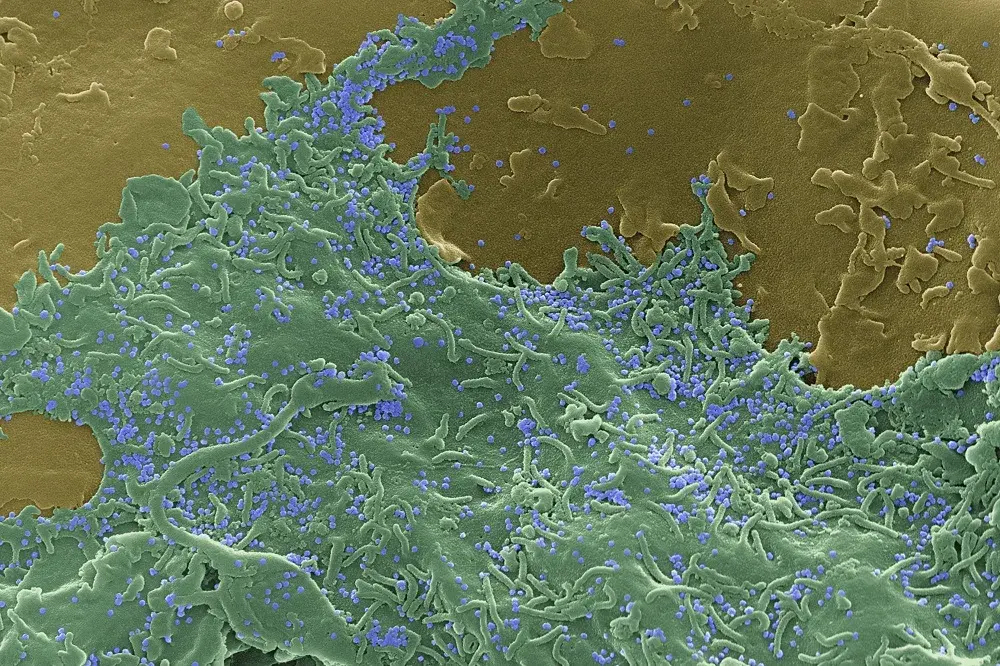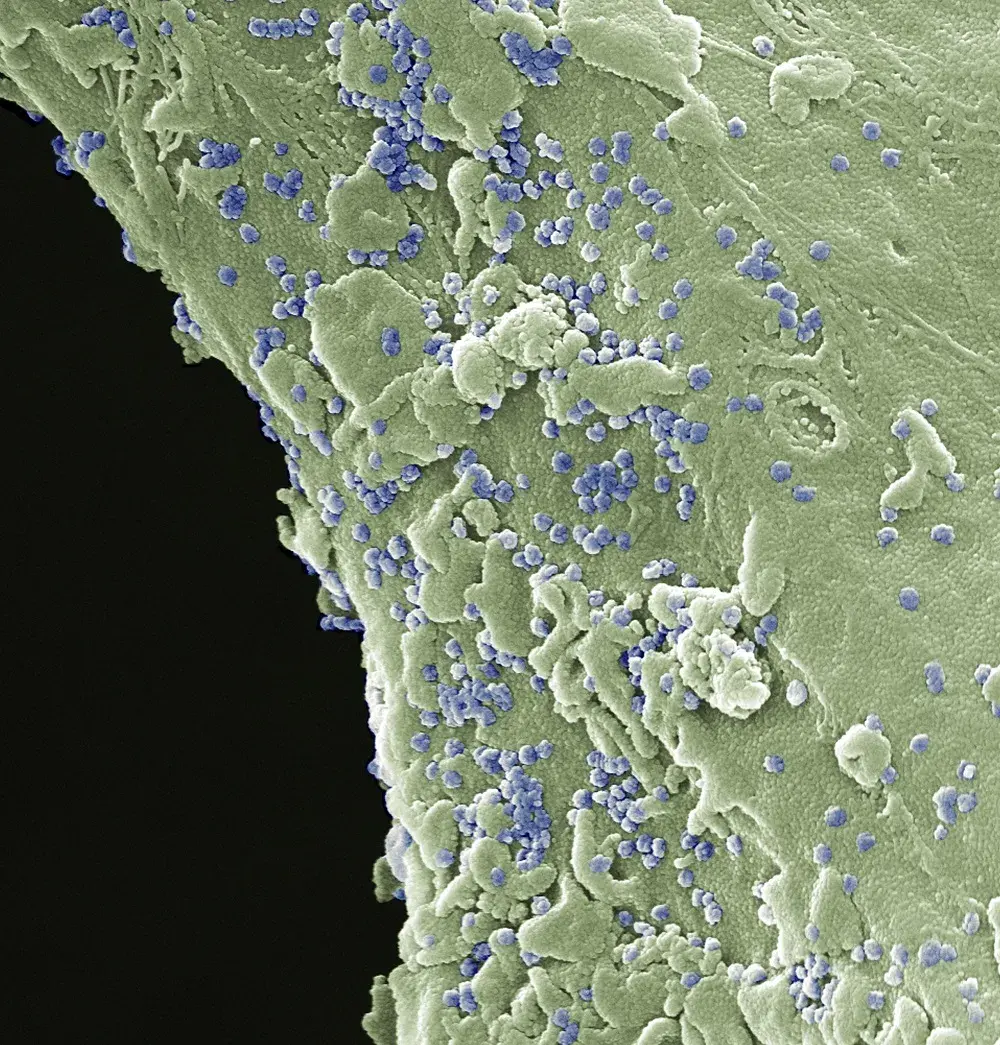Flu season is here and with the coronavirus pandemic still plaguing much of the world, it’s more important than ever to be health conscious. Countless scientists all over the world are striving to better understand SARS-CoV-2, the virus that causes COVID-19, and bringing the most relevant research findings together in one place is key to a coordinated effort.
The Master Question List (MQL) does just that. The MQL organizes our collective knowledge. This consolidation of recent, trustworthy COVID-19 information is updated every week with the latest results and data relevant to weathering the pandemic. The Department of Homeland Security Science and Technology Directorate (S&T) started publishing the MQL this past Spring as part of its COVID-19 response.
According to Dr. Lloyd Hough, director of S&T’s Hazard Awareness and Characterization Technology Center, “We go out and conduct searches of a variety of different publications and sources—some of them are traditional scientific sources like the National Library of Medicine, but there are also journal websites and news sources. We go through a lot of these sources and look for vetted information from reliable sources.”
“The MQL is important for us because it identifies what we don’t know,” continued Dr. Hough. “And with finite lab resources, it ensures we don’t duplicate something that is already being studied elsewhere. It’s really a matter of identifying the highest priority gaps—the things that are most impactful for better understanding the disease and helping us to respond to it.”
The list of what we don’t know is still long, but thanks to the dedication of numerous researchers, such as those at S&T’s National Biodefense Analysis and Countermeasures Center (NBACC), many important questions have been answered.
How does it spread from one host to another? How easily is it spread?
COVID-19 is highly contagious, and you can catch it by simply inhaling. It was clear early on that COVID-19 was easily spread through close contact, whether that was person-to-person or by touching contaminated surfaces. The U.S. Centers for Disease Control and Prevention (CDC) has now acknowledged that airborne transmission is possible under certain circumstances, meaning the virus can spread through particles in the air and not just the larger droplets that can be spread short distances.
It is also important to note that COVID-19 can infect anyone, though it’s worse for some than others. The CDC has found that most symptomatic cases are mild, but severe disease can be found in any age group. Children have proven susceptible (PDF, 28 pgs., 1.85 MB) to COVID-19. We don’t know exactly how infectious they are, but children with positive cases appear to have as much SARS-CoV-2 in their upper respiratory tract as adults.
How long does the virus live in the environment?
 It depends, but sunlight, humidity, and high temperatures help to inactivate the virus on surfaces and in the air. Survivability studies at NBACC have revealed that cooler, less humid environments facilitate virus survival while simulated sunlight rapidly inactivates the virus. There is a 90 percent reduction after six minutes in high-intensity sunlight (similar to mid-June) or 19 minutes in low-intensity sunlight (similar to early March or October). For those interested in seeing how the virus fairs under various environmental conditions, S&T has developed interactive calculators based on NBACC research data that estimate the decay of SARS-CoV-2 while on surfaces and in airborne particles.
It depends, but sunlight, humidity, and high temperatures help to inactivate the virus on surfaces and in the air. Survivability studies at NBACC have revealed that cooler, less humid environments facilitate virus survival while simulated sunlight rapidly inactivates the virus. There is a 90 percent reduction after six minutes in high-intensity sunlight (similar to mid-June) or 19 minutes in low-intensity sunlight (similar to early March or October). For those interested in seeing how the virus fairs under various environmental conditions, S&T has developed interactive calculators based on NBACC research data that estimate the decay of SARS-CoV-2 while on surfaces and in airborne particles.
How long after infection do symptoms appear? Are people infectious during this time?
According to research collected in the MQL, on average, symptoms develop five days after exposure to the virus and individuals are most infectious before they start showing symptoms. Early iterations of the MQL noted that, “Identifying the contribution of asymptomatic or pre-symptomatic transmission is important for implementing control measures” and this has turned out to be quite true. We now know that pre-symptomatic transmission causes around 40 percent of infections. Also, patients who don’t show any symptoms during the course of their infection can definitely spread the virus. It turns out asymptomatic individuals can transmit the disease as soon as two days after they become infected and at least 12 percent (PDF, 15 pgs., 444 KB) of all cases are estimated to be due to asymptomatic transmission. The CDC recommends that anyone, including those without symptoms, who has been in close contact with a positive COVID-19 case should be tested.
What are the signs and symptoms of an infected person?
 For those who do have symptoms, fever is often the first sign of trouble, according to the New England Journal of Medicine. Cough is also likely as well as fatigue and shortness of breath, which commonly persist for weeks to months. Most individuals infected with COVID-19 show evidence of lung damage. You could also have chills, muscle pain, headache, sore throat, and loss of taste or smell. Additional research has revealed that some patients have associated gastrointestinal issues or eye infections. Severe cases can involve neurological symptoms.
For those who do have symptoms, fever is often the first sign of trouble, according to the New England Journal of Medicine. Cough is also likely as well as fatigue and shortness of breath, which commonly persist for weeks to months. Most individuals infected with COVID-19 show evidence of lung damage. You could also have chills, muscle pain, headache, sore throat, and loss of taste or smell. Additional research has revealed that some patients have associated gastrointestinal issues or eye infections. Severe cases can involve neurological symptoms.
Can individuals become re-infected after recovery?
Studies show that re-infection is possible, but rare. Neutralizing antibodies develop in most patients, but the duration of any protection is unknown.
What personal protective equipment (PPE) is effective, and who should be using it?
Face masks are effective at reducing transmission of COVID-19 and almost everyone should be using them. Numerous studies have supported this finding, including research published by the American Society for Microbiology, (PDF, 5 pgs., 1.64MB) the Journal of the American Medical Association, and Nature Research.
The World Health Organization and U.S. CDC recommend wearing face masks when in public settings and when physical distancing is difficult. The benefit is maximized when most of the population wears face masks. Studies show we should avoid masks with exhalation vents or valves as they can allow particles to pass through unfiltered. Medical-grade respirators such as N95 face masks should be reserved for those most vulnerable. S&T research has shown that if handled properly, filtering facepiece respirators can be safely decontaminated for reuse. We also now have data published by the National Institutes of Health showing the effectiveness of homemade face masks varies based on the material used. Layered cotton fabrics with raised visible fibers are best when compared to other household materials such as t-shirts, bandanas, or towels.
How effective are social distancing measures?
Broad-scale control measures such as stay-at-home orders are effective at reducing transmission, as shown by research published in the Journal of Public Health Management & Practice and elsewhere. Social distancing and reductions in both non-essential visits to stores and overall movement distance led to lower transmission rates of COVID-19 in the United States. In hindsight, the data show each day of delay in emergency declarations and school closures was associated with a 5-6 percent increase in mortality. Contact tracing combined with high levels of testing and physical distancing may limit COVID-19 resurgence as restrictions are eased.
There is a path forward.
There are still some questions we don’t have the answer to, like “How much of the virus will make a healthy individual ill?” which once answered, will help make disinfection efforts, transmission models, and diagnostic practices more accurate. And of course, researchers are furiously working to find effective treatments and a vaccine.
“This is a scary, challenging time,” said Dr. Hough. “We owe it to the essential workers, the overwhelmed parents, the unemployed, and most of all, those who have fallen prey to this insidious disease to do all that we can to be responsible members of our communities. The public needs to buy time for our scientific and medical community.”
In the meantime, we need to follow the recommendations of the CDC and our local public health authorities and stay informed. If you’d like to learn more about any of the science presented here, check out the MQL. Over 700 studies are cited, and again, it is updated every week. You can find comprehensive public health guidance on the CDC website. For related media requests, contact STMedia@hq.dhs.gov.
